The five Great Lakes of North America are famous for being the largest freshwater system in the world. With a combined surface area of 94,250 square miles or 244,106 square kilometers, the Great Lakes are among the 15 largest lakes on the planet! When put all together, that would be larger than New York, New Jersey, Rhode Island, Connecticut, Massachusetts, New Hampshire, and Vermont combined. Yet, which is the biggest Great Lake? Each lake measures a vast surface area, but which would be the biggest lake ranked by size? This article will rank them from largest to smallest.
What Are The Great Lakes?
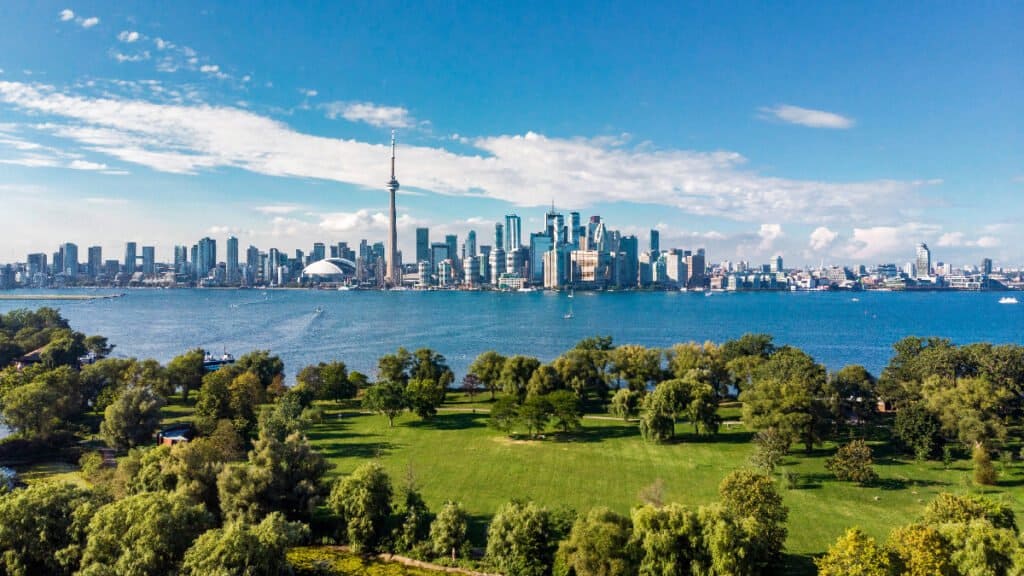
This is the smallest of the Great Lakes by surface area
©iStock.com/R.M. Nunes
The term “Great Lakes” refers to a collection of the five biggest freshwater lakes spread across the North American continent, touching eight states in the United States, namely, New York, Pennsylvania, Ohio, Michigan, Indiana, Wisconsin, Illinois, and Minnesota. Apart from having coastal shores in these various states, the enormous freshwater ecosystem also touches two provinces in Canada, namely, Quebec and Ontario.
There are five Great Lakes spread across the North American continent – Lake Michigan, Lake Superior, Lake Erie, Lake Huron, and Lake Ontario. These lakes’ shorelines, coasts, and beaches provide homes to thousands of various animal species and approximately 34 million people living in the connected states of the U.S. and provinces of Canada. The United States contributes 8% of its population to these settlers, while 32% of Canada’s people inhabit the Great Lakes basins.
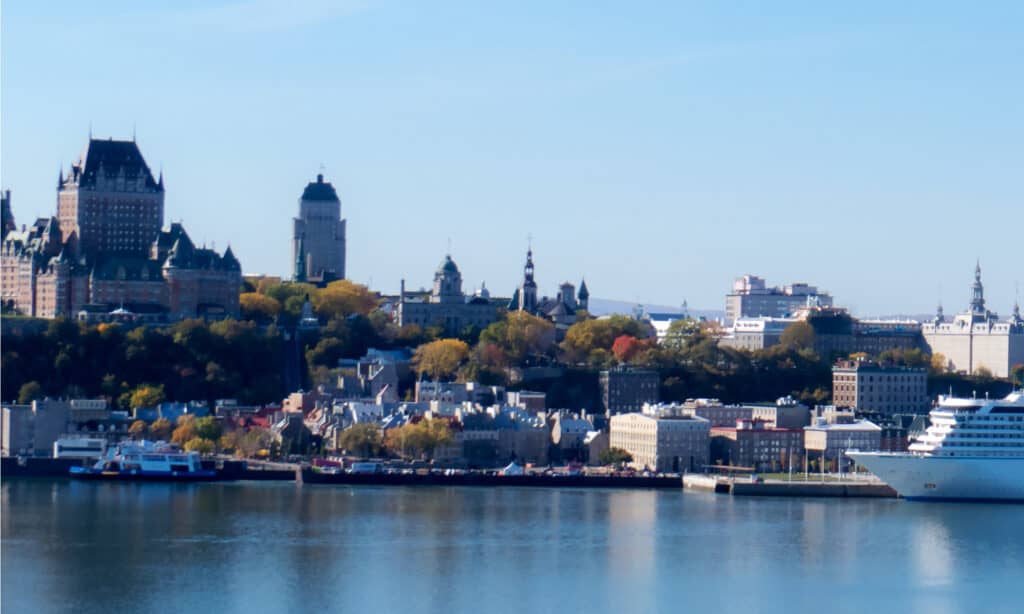
Quebec, Canada – Lake Ontario feeds into the Saint-Lawrence River
©bulbspark/Shutterstock.com
Judging by the distances between the states and Canadian provinces these lakes touch, it is no surprise that the Great Lakes also hold 20% of the Earth’s freshwaters, counting all the rivers, lakes, ponds, and other freshwater bodies in the world. When combined, the Great lakes contain 5,439 cubic miles of water or nearly 6 quadrillion gallons, enough to engulf the entire United States with 10 feet of water. It isn’t surprising since the Great Lakes connect to about 5,000 tributaries that comprise rivers, streams, smaller lakes, and straits flowing into them.
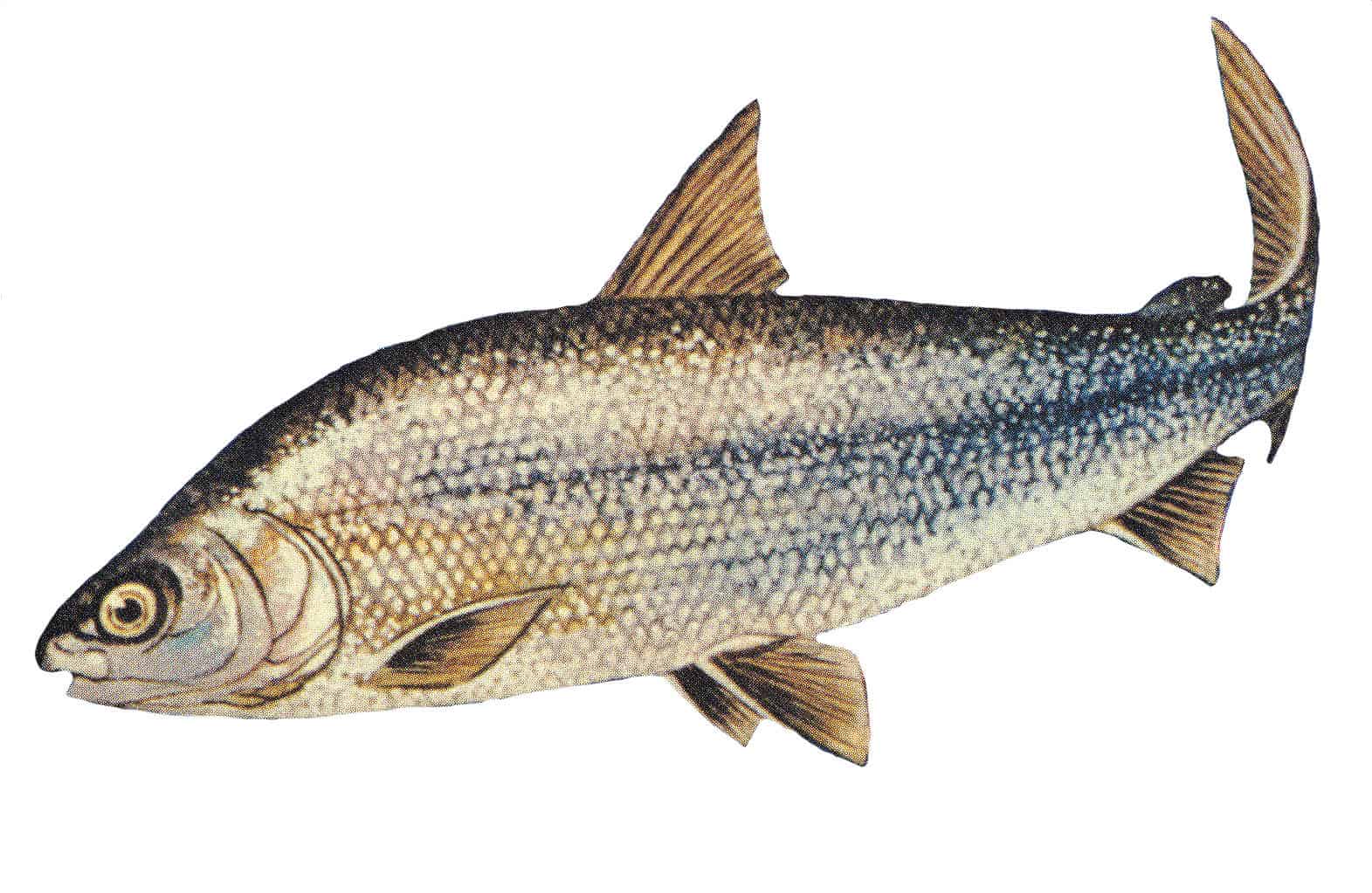
Whitefish is among the most common variety found in all of the Great Lakes.
©NOAA Great Lakes Environmental Research Laboratory / flickr – License
Because of this, the Great Lakes are home to diverse ecosystems that consist of over 3,500 species of plants and more than 170 fish species. Along the shorelines of the lakes, various animal species will never run out of natural habitat. The five lakes have a total shoreline measure of 11,000 miles, including island shorelines within the lakes. Sometimes, the Great Lakes are also dubbed “inland seas” as they are vast, hold massive volumes of water, possess great depths, and have strong currents. Unlike other lakes that have been around since millions of years ago, the Great Lakes came about nearly 15,000 years ago at the glacial age, making them a few of the youngest massive lakes.
Ranking The Great Lakes From Largest To Smallest
1. Lake Superior: The Biggest
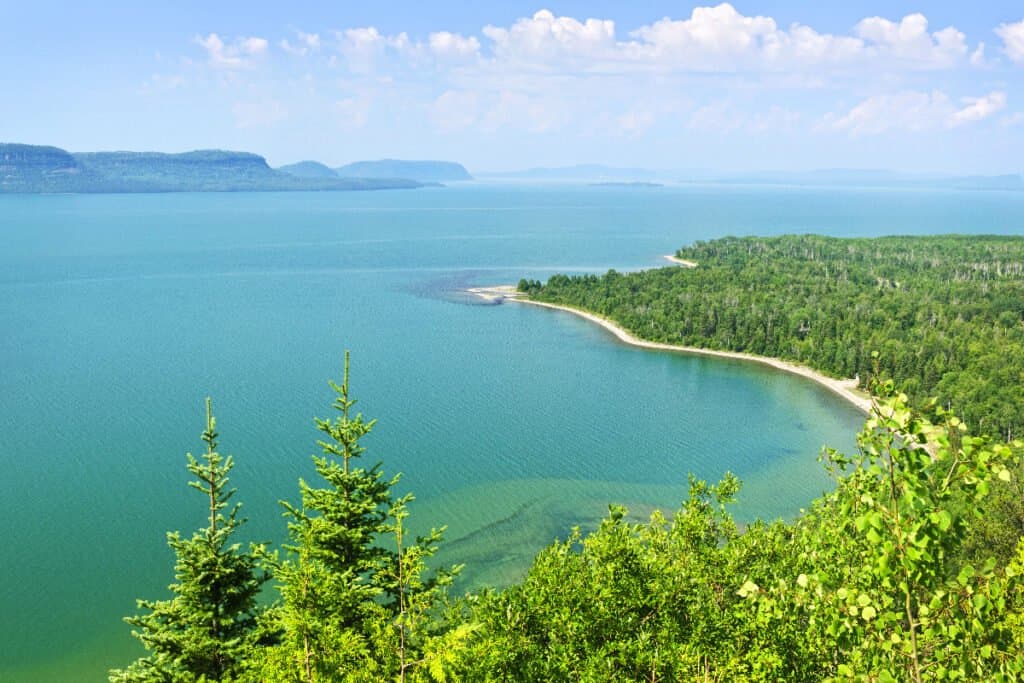
Lake Superior has 10% of the world’s surface freshwater and is the biggest of the Great Lakes.
©Elena Elisseeva/Shutterstock.com
Covering 37,700 square miles or 82,103 square kilometers, Lake Superior is indeed superior among the five Great Lakes when it comes to the surface area. The lake stretches from Ontario, Canada, to Wisconsin, Minnesota, and Michigan’s Upper Peninsula in the United States. The name “Lake Superior” points to its enormous size and position far north. Lake Superior is the northernmost lake among the North American Great Lakes and is also the deepest. The lake holds plenty of titles which positions it to the top. It also has a wowing maximum depth of 1,333 feet or 406 meters, enough to host an incredibly huge ecosystem. It is also an essential route in transporting iron ore, grains, and manufactured merchandise.
With a massive surface area, it is not surprising that Lake Superior is the second-largest lake globally, next to the Caspian Sea. And since the Caspian Sea is a saline lake, Lake Superior holds the title of the largest freshwater lake globally. It deserves its title, as Lake Superior contains 10% of the Earth’s freshwater. Given an extensive surface area that measures 160 miles or 257 kilometers wide and 350 miles or 563 kilometers long, it sure does contain a massive volume of water, as massive as 2,900 cubic miles.
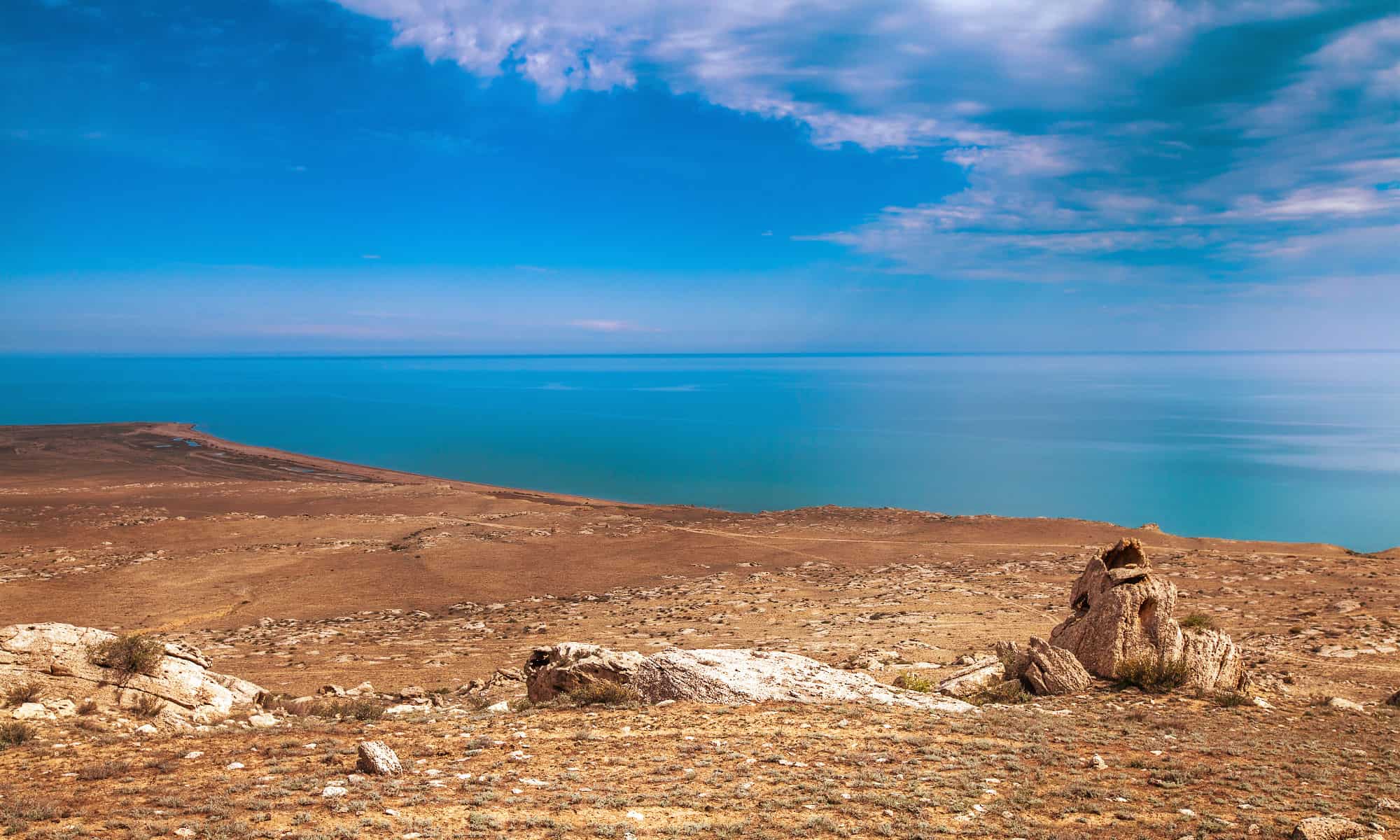
The Caspian Sea is the largest saltwater lake.
©Marina Khlybova/Shutterstock.com
Lake Superior is so vast that draining it at its current rate would take almost two centuries! It is the biggest lake among the Great Lakes, but how big is it? Imagine all of the Great Lakes combined, added by three more Lake Erie’s. Yes, that’s how massive Lake Superior is!
2. Lake Huron
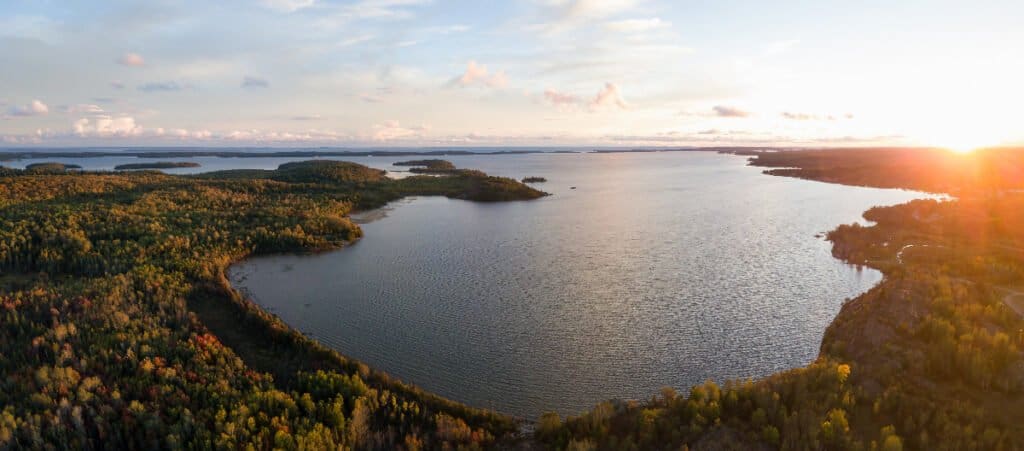
Lake Huron is a large lake that is connected to Lake Michigan and is the second-biggest of the Great Lakes.
©EB Adventure Photography/Shutterstock.com
The second-largest of the Great Lakes is Lake Huron. It is located in the eastern part of the Lake Michigan–Huron basin and shares Lake Michigan’s elevation of 577 feet or 176 meters. Lake Huron measures 23,007 square miles or 59,588 square kilometers, connecting to Lake Michigan via the Strait of Mackinac, a 5-mile-wide, 120-feet deep strait. It touches both the state of Michigan in the United States and the province of Ontario in Canada. The lake covers 13,904 square miles of Ontario and 9,103 square miles of Michigan. Lake Huron’s deepest part measures 750 feet down or 230 meters, located in the northeast region where small landforms draw out the shoreline.
Apart from being the second-largest lake among the Great Lakes and the fourth-largest lake on the planet by surface area, Lake Huron is also known for its incredible beauty. Lake Huron has a collection of wetlands, forests, beaches, dunes, and extensive river systems that hosts a wide range of biodiversity and provides a home to settlers and stunning views and attractions to tourists. Although not the largest Great Lake, Lake Huron boasts the longest shoreline, stretching to 3,827 miles and harboring 30,000 islands.
3. Lake Michigan
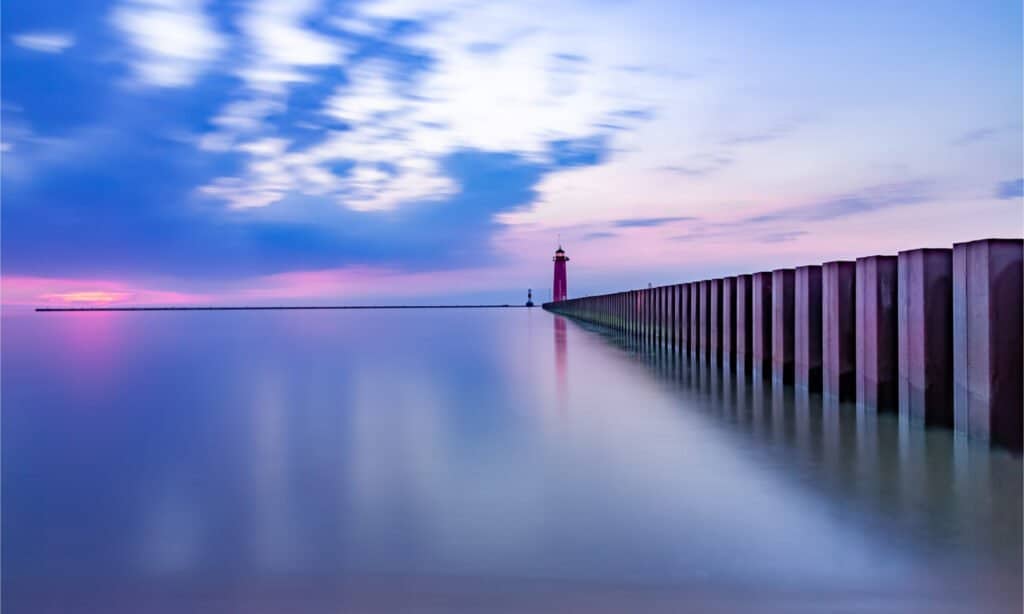
With a surface area of 22,300 square miles, Lake Michigan is the third-largest Great Lake.
©Renray/Shutterstock.com
Measuring by surface area, Lake Michigan is the third largest of the Great Lakes, but it is one of the largest lakes entirely within the United States territory. While the Great Lakes typically touch various states in the U.S. and some parts of Canada, Lake Michigan is the only Great Lake that is all-American and does not touch any parts outside the U.S. Lake Michigan has a surface area of 22,300 square miles or 57,800 square kilometers. It also holds approximately 1,200 cubic miles of water, equivalent to one quadrillion gallons of water. According to satellite data, draining the lake of 400 billion gallons would result in only a one-inch drop in water level.
Bordered and shared by four states – Michigan, Illinois, Indiana, and Wisconsin- the lake stretches 321 miles or 517 kilometers long and 118 miles or 190 kilometers wide. If draining Lake Superior would take almost two centuries, emptying Lake Michigan would take 62 years. And since lakes are naturally slow-moving, every drop flowing into Lake Michigan’s waters would travel for half a century to leave the lake. As massive as it is, Lake Michigan’s waters come from significant rivers in the country. About 35% of the country’s rivers connect and flow to the lake, including the state’s primary rivers.
4. Lake Erie
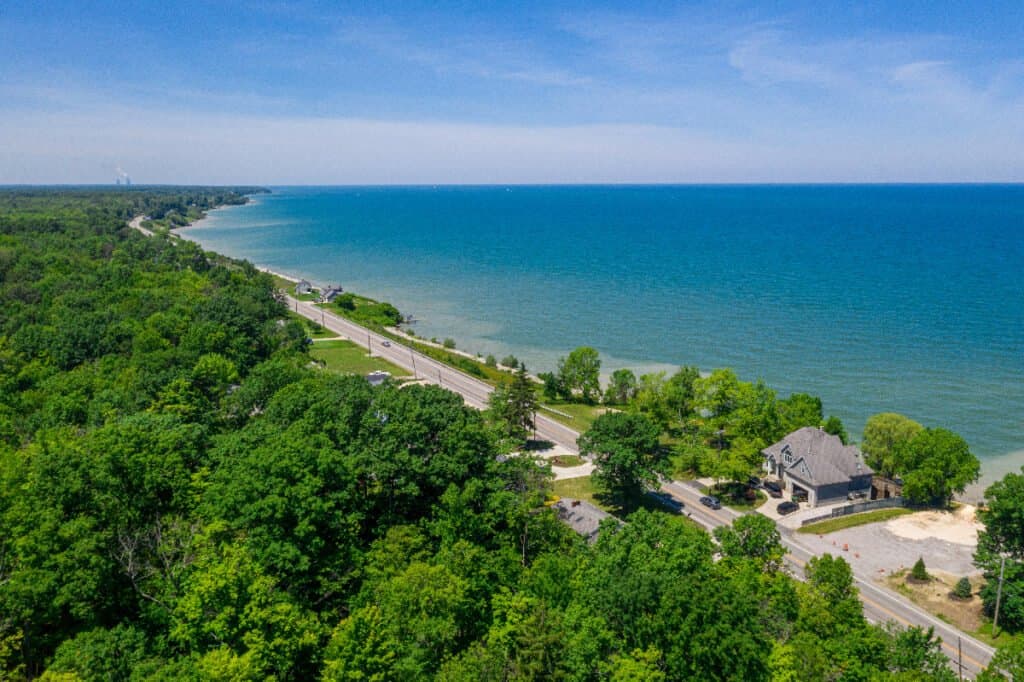
Lake Erie measures 9,9910 square miles, making it the second to the smallest Great Lake by surface area.
©IanSkylake17/Shutterstock.com
Ranking fourth among the Great Lakes is Lake Erie, extending to the Canadian province of Ontario to the states of Pennsylvania, Ohio, New York, and Michigan of the United States. Lake Erie measures 9,910 square miles or 25,667 square kilometers. While it is second to the smallest by surface area, it has the smallest water volume, holding only 116 cubic miles or 480 cubic kilometers. With a maximum depth of 210 feet or 64 meters, it is also the shallowest. It is also a significant geographical landmark in North America as it serves as a boundary between Canada and the United States.

Lake Erie and the Detroit River, where it receives most of it water from.
©iStock.com/JerryB7
Lake Erie mainly receives its waters from the Detroit River, which carries waters from Lake Huron, the Raisin rivers of Michigan, Grand rivers of Ohio, and more. The water in the lake flows out through the Niagara River at its eastern end, while its islands are all located at its western end, including the lake’s largest, Pelee Island in Ontario. Lake Erie connects to the smallest Great Lake, Lake Ontario, through the Welland Canal.
5. Lake Ontario
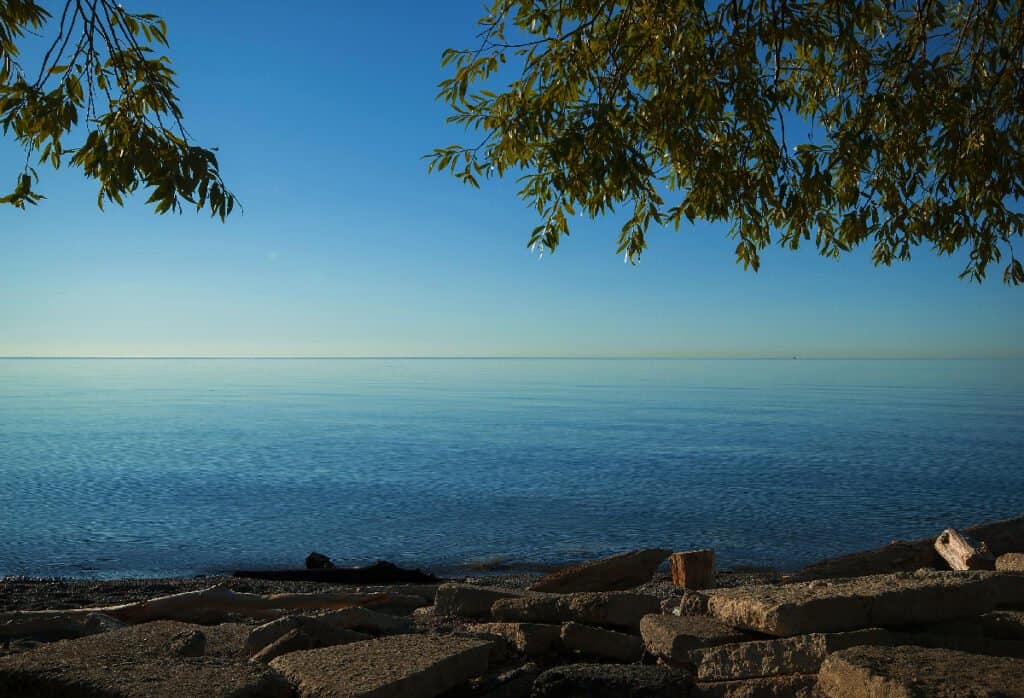
Lake Ontario is the smallest Great Lake.
©Michael J. Eves/Shutterstock.com
The smallest Great Lake by surface area is Lake Ontario. Shared by the province of Ontario in Canada and the U.S. state of New York, Lake Ontario measures 7,340 square miles or 18,960 square kilometers. However, when it comes to water volume, it still surpasses its neighbor, Lake Erie, as it holds 1,640 cubic kilometers of water compared to the latter’s 480. This is because Lake Ontario may be smaller by surface size but is significantly deeper than Lake Erie, with a maximum depth of 802 feet or 244 meters.
The lake’s waters mainly come from the Niagara River, where water from Lake Erie is disposed of. Of all the Great Lakes, it also has the lowest elevation, sitting 243 feet above sea level.
Bonus: Which Great Lake Contains the Most Shipwrecks?
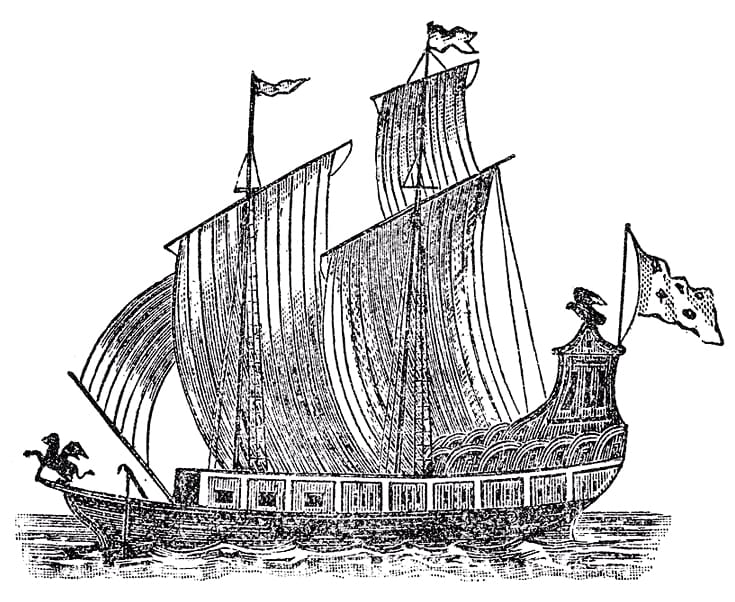
The oldest shipwreck recorded on the Great Lakes was the French ship
Griffonwhich vanished on Lake Michigan in 1679.
©Father Louis Hennepin, Public domain – License
The Great Lakes are as big as seas with weather and currents so unpredictable that nightmarish storms can pop up from calm waters within minutes. There are thousands of shipwrecks listed in historical documents and seafaring songs – and legions of ghosts that haunt the decks of ships that sail these waters today. All of the five lakes have had their share of tragedies – but one holds the record for the most shipwrecks – Lake Michigan contains the largest ghost ship graveyard. Of the 6,000 known shipwrecks of the Great Lakes – Lake Michigan holds 1,500 or more.
The third-largest and only Great Lake that lies totally within the United States, Lake Michigan contains more shipwrecks than the other lakes as well as the oldest recorded one. The French ship Griffon was the first European ship to sail the Great Lakes and the first recorded ship to sink. It vanished with all hands in 1679 with no clue as to what happened or where the wreck lies under the frigid depths of the lake.
On July 24, 1915, the Eastland carried 2,500 Western Electric employees from Chicago for a company cruise. Shortly after leaving her birth, the ship rolled over causing the death of 835 people – the deadliest wreck in Great Lakes history.
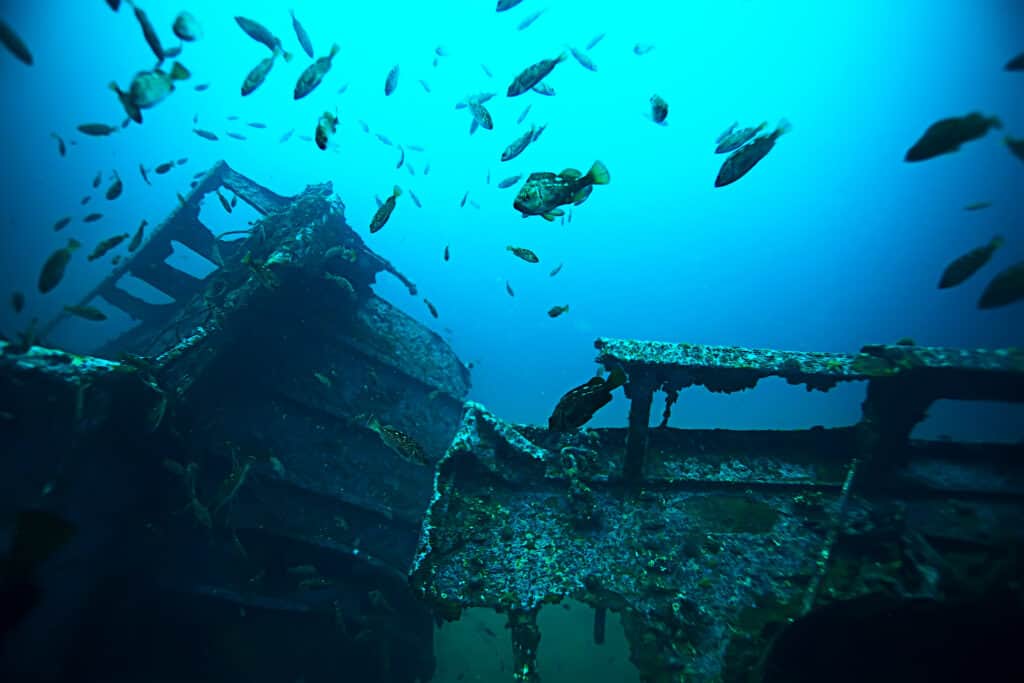
Shipwrecks in the Great Lakes are remarkably preserved by the cold, fresh water.
©Kichigin/Shutterstock.com
Occasionally, artifacts from shipwrecks are found in fishing nets – like the wallet of the captain of the Rouse Simmons, lost in 1913 while carrying a load of Christmas trees. Seafaring ghosts aren’t the only spirits of Lake Michigan – more than 300 U.S. Navy planes lie near the former location of two training aircraft carriers.
Whenever shipwrecks are found – they are often in remarkable condition – the cold glacial water of the Great Lakes preserving them like ships in a bottle – frozen in time and terror.
The photo featured at the top of this post is © Sean Pavone/Shutterstock.com
Thank you for reading! Have some feedback for us? Contact the AZ Animals editorial team.






